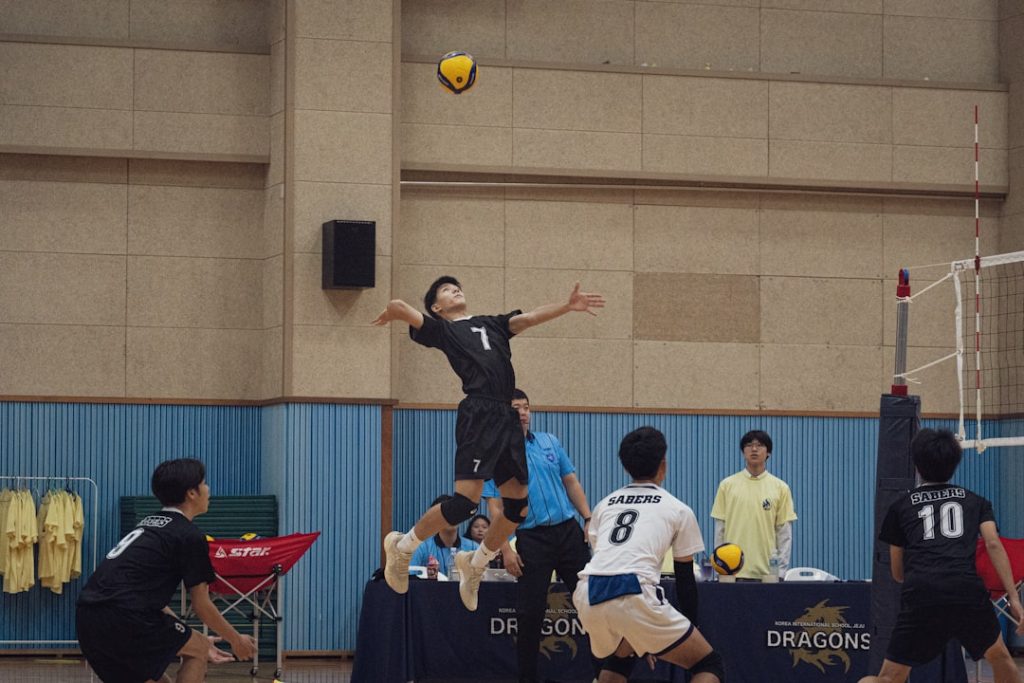Ever watched a volleyball game and noticed that one player on each team wears a completely different colored jersey? If you’re like most viewers—new or even experienced fans—you’ve probably wondered why this unique outfit choice is part of the game. Well, there’s a fascinating reason behind it, and it has everything to do with volleyball strategy, safety, and the rules of the sport.
TLDR: Why One Volleyball Player Wears a Different Color Jersey
The differently colored jersey identifies the libero, a specialized defensive player in volleyball. This position was introduced to enhance back-row defense without compromising rotation rules. The libero cannot serve (in some leagues) or attack from the front row and has specific substitution privileges. Their unique jersey helps referees, coaches, and spectators easily recognize these exception players and enforce the rules correctly.
Who is This Player and What is Their Role?
The player in question is called the libero, a position introduced by the International Volleyball Federation (FIVB) in 1998. The libero is a defensive specialist who wears a different color jersey to signify their unique role and limitations under the rules of volleyball.
A Game-Changing Introduction
Before the libero was introduced, teams often struggled to maintain high-level backcourt defense, especially after rotations forced taller, less agile players into the back row. The libero fixes that by:
- Allowing for stronger defense with a dedicated, quick player always in the back row
- Helping with accurate digs, passes, and overall control of the ball
- Stabilizing serve reception, especially against powerful servers
The libero enhances consistency and control in a team’s play, acting like a defensive quarterback who reads the opposing team’s attack and reacts with strategic passes.

What Makes a Libero Different?
Besides wearing that eye-catching jersey, the libero has several restrictions and permissions that make them unique on the court. It’s these specific rules that require them to be easily identifiable.
Restrictions:
- The libero cannot serve (with exceptions in some leagues like NCAA women’s volleyball).
- They cannot play in the front row or attempt spikes above net height.
- No setting an attack above the net: If the libero sets in front of the 3-meter line (10-foot line) using an overhead pass, the hitter may not attack the ball above the net height.
Privileges:
- The libero does not count as a regular substitution, allowing them to rotate in and out multiple times without burning substitution counts.
- They can replace a back-row player at any time, but must stay out for at least one rally between substitutions.
- Only one libero is allowed on court at a time, but teams may designate two per match.
Why the Different Colored Jersey?
The most obvious reason for the libero’s standout jersey is visual clarity. Because their role includes special privileges and constraints, referees, coaches, and even teammates need to quickly identify the libero to enforce those rules accurately. The contrasting jersey ensures:
- Officials can monitor their actions easily during fast-paced games
- The libero’s constant switching in and out doesn’t confuse substitution counts
- Spectators and commentators can follow strategy and plays more clearly
Color contrast rules are strict: the libero’s jersey must differ clearly from the rest of the team in both front and back designs, making them stand out 100% of the time on the court.
A Strategy-Centric Role
Though they may never jump high at the net or deliver powerful attacks, liberos are key to a successful team strategy. They are often the players with the best ball-handling skills and the most consistent serve-reception statistics. A team’s performance can rise or fall based on the quality of their libero’s passing game.
Key Contributions of a Libero:
- Solid positioning and awareness during defensive transitions
- Accurate passing to facilitate smooth attacking plays
- Boosting team morale with high-energy defense and quick reflexes
In fact, coaches often build serve-receive formations around the libero’s positioning to capitalize on their strengths.

Positioned for Excellence: Where Does the Libero Play?
The libero always plays in the back row, typically in the position 5 (left back) or position 6 (middle back). They never rotate to the front row, making their movements more predictable and allowing for a stronger defensive setup. Because they don’t need to perform front-row duties, they can focus entirely on:
- Digging (keeping opponent’s attacks from hitting the floor)
- Passing (to the setter or strategically to attackers)
- Receiving and positioning themselves for maximum court coverage
In high-stakes volleyball matches, such as Olympic and professional league play, the libero is often one of the most experienced and technical players on the team.
Evolution of Libero Roles Around the World
Globally, the libero has evolved differently depending on league and competition levels. For example:
- FIVB (International Volleyball): Libero cannot serve.
- NCAA (USA College Volleyball): Allows liberos to serve in specific rotations.
- Club Levels and High School: Rules may vary; sometimes used as flexible back-row players with more leniency for development purposes.
Fun Fact:
In youth or amateur leagues where the libero is allowed to both serve and play more actively, players are sometimes developed for multiple skills, nurturing future all-around athletes as well as specialists.
What Does It Take to Be a Libero?
Libero is not a flashy role—there are no big kills or spotlight aces—but it’s a role defined by grit, reaction speed, and consistency. Coaches look for players who:
- Read the game exceptionally well
- Have fast reflexes and great lateral movement
- Don’t mind diving constantly to keep the rally alive
- Possess calm under pressure to make sharp passes
Great liberos are leaders by example—not necessarily shouting commands, but consistently setting the team’s defensive tone with hustle and smart positioning.
Conclusion: Behind the Jersey Color Lies a Powerful Role
The libero may wear a different color jersey, but they are far from outsiders—they’re pivotal players in any serious volleyball squad. Their jersey tells a story of specialization, game strategy, and a role that doesn’t seek the spotlight but often determines the outcome of a match.
So next time you watch a match and spot that standout jersey, you’ll know exactly why it’s there—and how important that player is to the team’s success.
